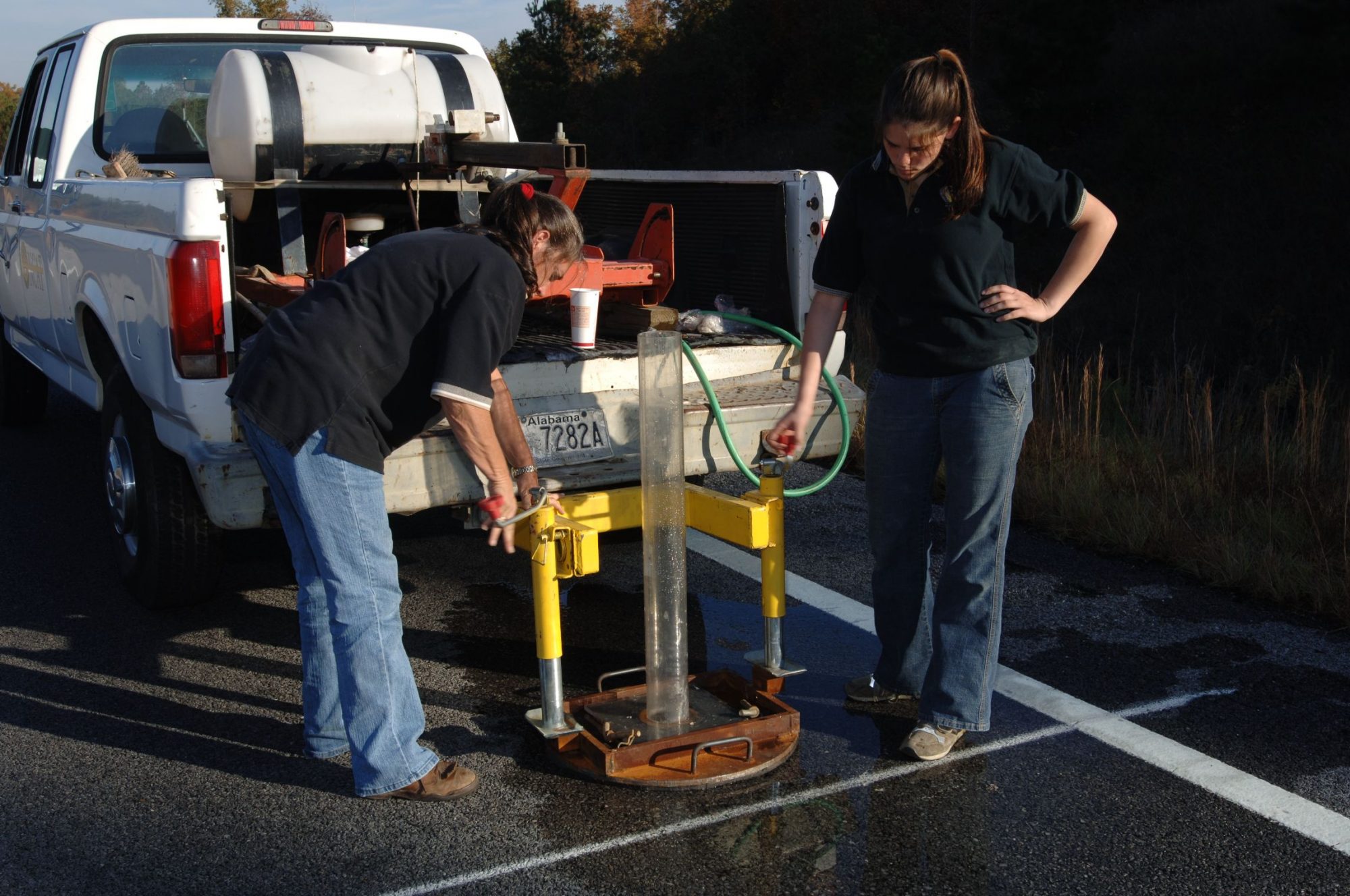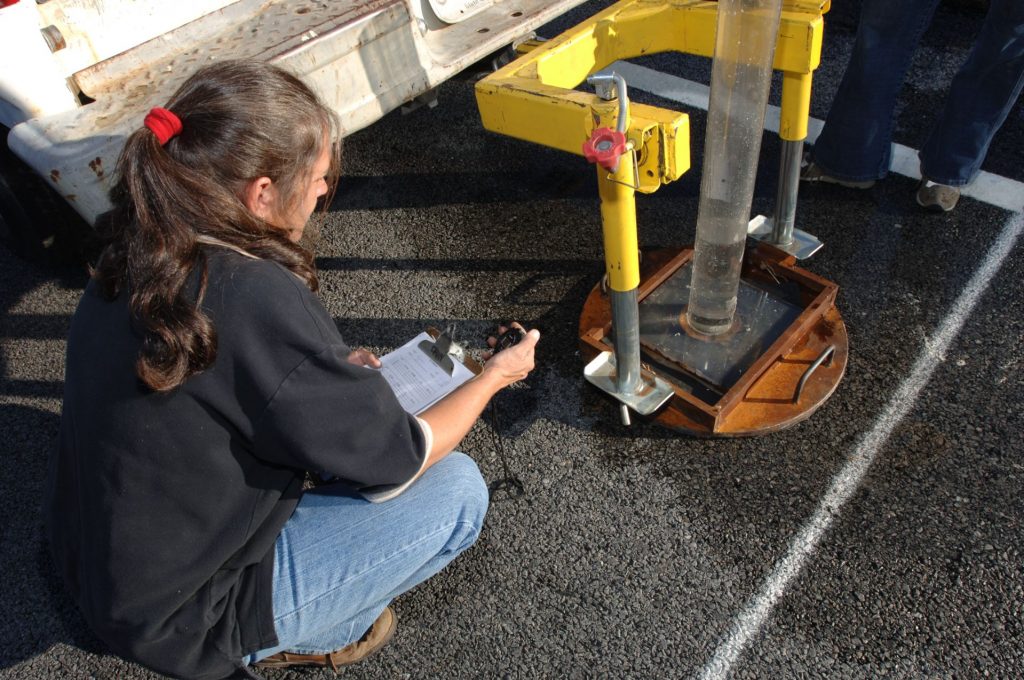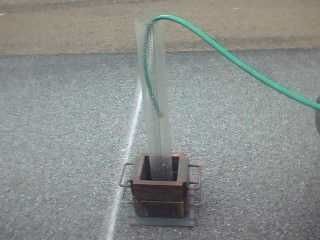How to Check In-place Air Voids
BY AsphaltPro Staff

The National Center for Asphalt Technology (NCAT) asphalt permeameter is one device paving crews can use to double-check in-place air voids during construction.
Similar instruments are available through testing equipment suppliers and are typically constructed of four-tiered, clear plastic for non-destructive field testing. With the instrument, a technician measures the rate of water-level fall in the permeameter over a defined period of time.
To begin, a technician selects an area of about one square foot of unsealed asphalt mat of known thickness and brushes it clean of any debris.

NCAT personnel time the volume of water flowing through the pavement.
The technician applies a moldable sealant to the underside of the permeameter base.
She places the bottom section on the asphalt mat and uses gentle foot pressure to temporarily attach and seal the permeameter to the asphalt pavement. She then affixes the top section of cylindrical piping to the bottom section with the same sealant. She places weights on the base section to counteract the head pressure developed when the permeameter is filled with water. At least four 5-pound weights are recommended, but notice the jack on the back of the work truck that NCAT uses in the photos herein to apply more adequate down-pressure.
To fill, the technician inserts a funnel in the top section of the assembled permeameter and slowly adds water, attempting to minimize the introduction of air bubbles. Once the permeameter is filled, she checks for leaks; assuming there are none, she proceeds with testing, recording the initial water level (h1) in centimeters, and the start time at the beginning of the test.

This example shows a permeameter using weights to counteract the head pressure from filling the instrument with water. Photo courtesy of NCAT
Coarse or open-graded asphalt mixes will take less time and will normally require the technician use the larger diameter tiers to determine volume of flow through the pavement, while fine-graded mixes will take more time and require the top, smaller diameter tiers. Ultimately, the testing time should be long enough that there is a measurable and steady rate of water-level-drop in the permeameter.
The technician records the final water level (h2) in centimeters and the elapsed time (t) at the conclusion of the test. The elapsed time and total water volume (ln (h1/h2)) are used to calculate and report a coefficient of permeability (K).
